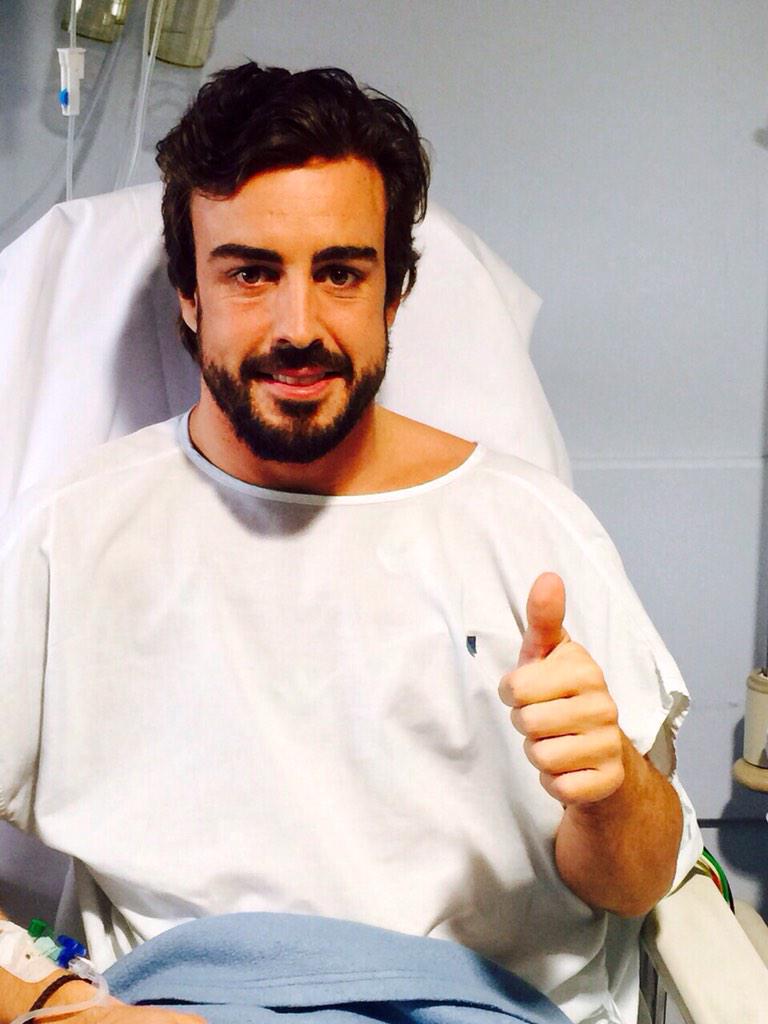
(@lsgrcbd VIA Twitter)
The McLaren Honda Formula One Team have released the
following statement regarding Fernando Alonso.
We are pleased to confirm that, having been
involved in an on-track incident at the Circuit de Barcelona-Catalunya (Spain)
on February 22nd,
Fernando Alonso is making a solid recovery in hospital, and is chatting to
family, friends and hospital staff.
From the
scene of the incident he was driven to the circuit’s medical centre, where he
was given first aid and, as per normal procedures, was sedated in preparation
for an air-lift to hospital.
In
hospital a thorough and complete analysis of his condition was performed,
involving CT scans and MRI scans, all of which were completely normal.
In order
to provide the privacy and tranquillity required to facilitate a peaceful
recuperation, he is being kept in hospital for further observation, and to
recover from the effects of the medication that successfully managed his
routine sedation yesterday.
We intend
to give him every opportunity to make a rapid and complete recovery, and will
evaluate in due course whether or not he will participate in the next Barcelona
test.
Over the
past 24 hours, we have been carrying out a detailed analysis of the damage to
Fernando’s car, and its associated telemetry data, in order fully to understand
the cause, or causes, of his accident. Even at this early stage, we have been
able to reach some firm conclusions.
His car
ran wide at the entry to Turn Three – which is a fast uphill right-hander –
allowing it to run onto the Astroturf that lines the outside of the track. A
consequent loss of traction caused a degree of instability, spitting it back
towards the inside of the circuit, where it regained traction and struck the
wall side-on.
Our
findings indicate that the accident was caused by the unpredictably gusty winds
at that part of the circuit at that time, and which had affected other drivers
similarly (eg, Carlos Sainz Jnr).
We can
categorically state that there is no evidence that indicates that Fernando’s
car suffered mechanical failure of any kind. We can also confirm that
absolutely no loss of aerodynamic pressure was recorded, which fact indicates
that the car did not suffer any aerodynamic loss, despite the fact that it was
subjected to a significant level of g-force. Finally, we can also disclose that
no electrical discharge or irregularity of any kind occurred in the car’s ERS
system, either before, during or after the incident.’

No comments:
Post a Comment